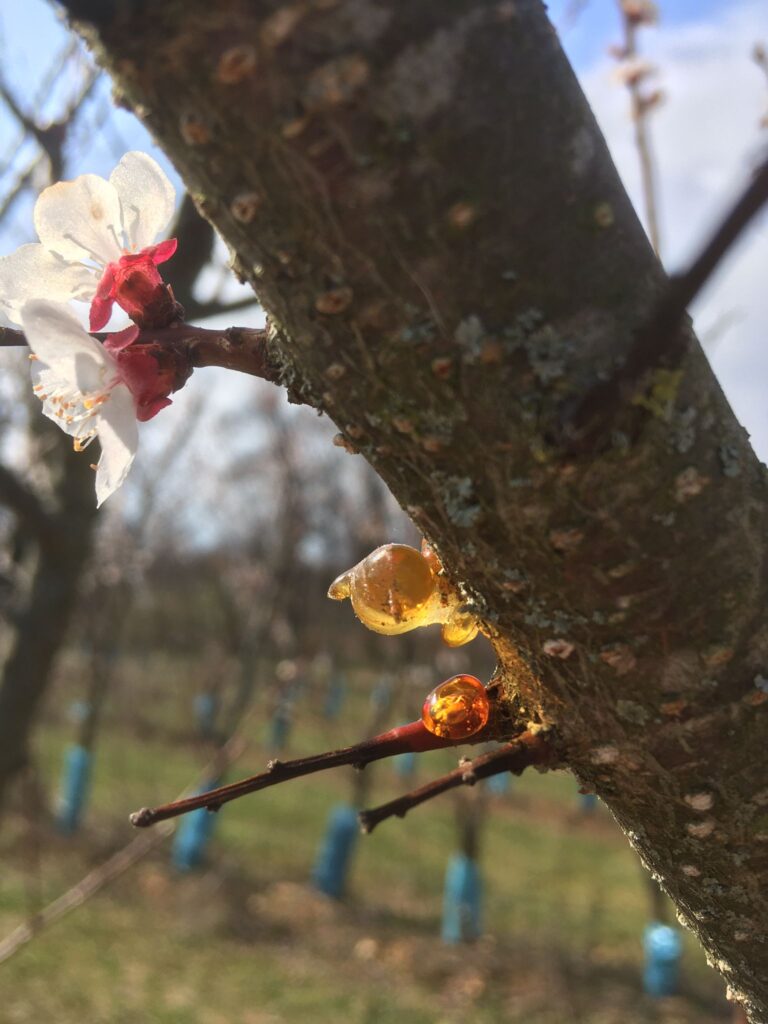Thesis defence] 3/12/2024 - Chloé FELTIN: "Diversité et interactions des phages de Pseudomonas syringae dans un environnement agricole" [Diversity and interactions of Pseudomonas syringae phages in an agricultural environment]. (UPR Plant Pathology)
Chloé FELTIN will defend her thesis on 3 December 2024 on the theme: "Diversité et interactions des phages de Pseudomonas syringae dans un environnement agricole" (Diversity and interactions of Pseudomonas syringae phages in an agricultural environment).
Date and place
Oral defense scheduled on Tuesday 03 December 2024 at 1.30pm
Venue: Salle Cœur-De-Centre - Domaine St Paul - Site agroparc - 84914 Avignon CEDEX 9 - France
Discipline
Biology

Laboratory
UPR 407 - PV - Plant pathology
Composition of the jury
| Ms Cindy MORRIS | Avignon University - INRAE | Thesis supervisor |
| Ms Anne SICARD | INRAE - University of Strasbourg | Examiner |
| Mr Laurent DEBARDIEUX | Pasteur Institute | Rapporteur |
| Ms Frédérique LE ROUX | University of Montreal | Rapporteur |
| Ms Clara TORRES-BARCELO | INRAE | Thesis co-supervisor |
| Mr Eric DUGAT-BONY | AgroParisTech - INRAE - Campus Agro | Examiner |
| Mr Benoit MOURY | INRAE | Examiner |
| Mr Jordan VACHERON | University of Lausanne | Examiner |
| Ms Annette BERARD | INRAE | Guest |
Summary
Bacteriophages (phages), viruses specific to bacteria, display considerable genetic diversity in most ecosystems. Phages play an essential role in bacterial communities, not only by influencing the abundance and diversity of bacterial populations, but also by modulating some of their phenotypic traits. While many studies focus on the role of phages in marine and human environments, little attention has been paid to phages associated with plants, with the exception of their use in biocontrol contexts. The Pseudomonas syringae species complex is genetically diverse and ubiquitous, occurring in agricultural and non-agricultural ecosystems, as well as in and on plants that can act as pathogens. Apricot trees are particularly affected by bacterial canker, a disease caused by P. syringae. The genetic diversity of these pathogenic strains on apricots is therefore significant, but the reasons behind this diversity remain to be discovered. My thesis research is based on an ecological approach aimed at studying the role of phages in an agricultural context, using the P. syringae pathosystem on apricots as a model. The aim is to characterise the natural diversity of phages present in this agroecosystem and to gain a better understanding of their interactions with their hosts.

We isolated a collection of 25 phages infecting P. syringae from apricot tree soils. Genomic analysis, after purification and sequencing, revealed great diversity, with 14 genera, including 11 new ones, as well as 18 new species that we have described. A notable feature of this collection is the abundance and diversity of potential metabolic helper genes, identified in at least 32 % of the phages isolated. The host range of 23 phages from this collection was compared with 44 strains of P. syringae from three different environments, agricultural and non-agricultural. The results revealed a nested phage-bacterium interaction structure, in line with the ecology of the P. syringae species complex, which does not show any geographical structuring of its populations. The complete genome of the bacterial strains was sequenced to analyse their defensome, with the hypothesis that these defence systems could play a role in protection against phages. The prevalence of phages and P. syringae strains was then analysed in an apricot agroecosystem to gain a better understanding of the bacterial canker disease. A detailed ecological analysis of the phageome, including four apricot tree habitats, was carried out using metagenomics for the phages and metabarcoding for the P. syringae strains. Very few of the phages identified were already listed in databases, and few of them had predicted hosts. Few phages were ubiquitous, making up the phage core of this ecosystem. A specific phageome signature was found between symptomatic and asymptomatic branches. In particular, we did not observe the presence of phages from the Bacillota and Actinomycetota phyla in symptomatic tissues and a (non-significant) increase in the number of phages targeting the Pseudomonas genus was noted in symptomatic branches compared with asymptomatic tissues. Our results represent a significant advance in our knowledge of the diversity of phages infecting phytopathogenic bacteria. These results provide valuable insights into understanding the interactions between phages and their host in the context of bacterial canker disease. Finally, our results open up new avenues for optimising epidemiosurveillance and biocontrol strategies for plant diseases.
Keywords Bacteriophage, Pseudomonas syringae, Apricot trees, Agriculture, Ecology, Omics
Updated on 22 November 2024